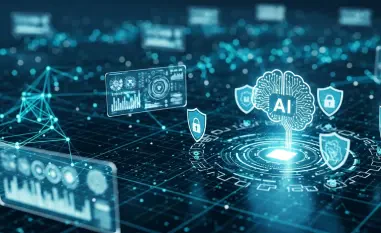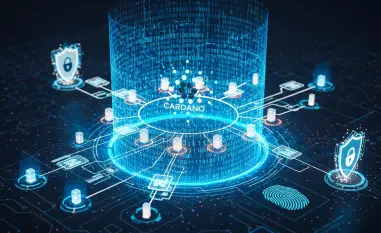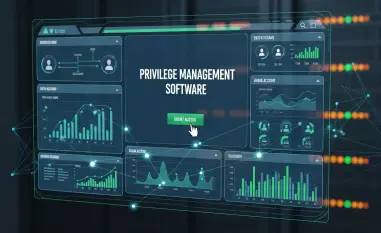The field of cybersecurity is experiencing rapid growth and evolution to counter increasingly sophisticated threats. With the rise in cyber-attacks such as phishing, ransomware, and malware, the importance of cybersecurity has never been more pronounced. This article delves into the current state, projected trends, and future challenges of cybersecurity, highlighting key statistics, the role of cybersecurity analysts, the industry’s dynamics, predominant cybersecurity threats, workforce demographics, and expert insights.
Growing Importance of Cyber Defense
As digital transformation accelerates, the frequency and complexity of cyber-attacks have surged. Organizations across the globe are facing an unprecedented number of threats, ranging from phishing and ransomware to advanced persistent threats (APTs). The increasing reliance on digital infrastructure has made robust cyber defense mechanisms essential for safeguarding sensitive information and maintaining operational integrity.
The rise in cyber-attacks has underscored the critical need for comprehensive cybersecurity strategies. Companies are now prioritizing the implementation of advanced security measures to protect against data breaches and financial losses. The growing importance of cyber defense is reflected in the significant investments being made in cybersecurity technologies and personnel. Beyond technology, businesses are adopting more stringent policies and protocols to ensure their defenses can keep pace with evolving threats.
As these threats become more sophisticated and diverse, the challenge lies in not just blocking known vulnerabilities but also in anticipating and mitigating new forms of cyber risks. This underscores the necessity for a proactive stance in cyber defense, where continuous monitoring, regular assessments, and adaptive security protocols play crucial roles. Organizations are recognizing that a reactive approach is no longer sufficient and are striving to stay one step ahead of cyber adversaries.
Workforce Growth and Skills Gap
The cybersecurity workforce is expected to grow significantly, projecting to reach 5.17 million professionals by 2025. This expansion demonstrates the escalating demand for skilled cyber defense personnel capable of addressing the rapidly evolving threat landscape. However, despite this substantial growth, a significant skills gap is projected to persist, with an estimated 3.25 million cybersecurity roles potentially remaining unfilled by 2025.
Efforts to bridge this skills gap have achieved various levels of success. Educational institutions and organizations are placing a stronger focus on cybersecurity education and training programs. Universities are offering specialized degrees in cybersecurity, geared towards equipping students with the necessary knowledge and competencies. Certifications such as Certified Information Systems Security Professional (CISSP) and Certified Ethical Hacker (CEH) have become more prevalent, as they provide cybersecurity professionals with the credentials needed to tackle sophisticated cyber threats.
Alongside formal education, hands-on training initiatives are essential in cultivating practical skills. Many companies are investing in upskilling their current workforce, enabling employees to become proficient in new technologies and threat mitigation tactics. Despite these efforts, the skills shortage underscores the need for accelerated and continuous professional development within the cybersecurity field. Initiatives to attract more diverse talent into the cybersecurity sector also aim to foster innovation and fill critical gaps in expertise.
Threat Evolution and Proactive Defense Strategies
Cyber threats are becoming more advanced, involving tactics like malware-free identity attacks and the increased vulnerability of cloud environments. The evolution of these threats necessitates a shift from reactive to proactive defense strategies. Companies are now incorporating continuous monitoring and updating defenses to tackle emerging threats effectively.
Proactive defense strategies involve a range of activities, including regular risk assessments, threat hunting, and the implementation of zero-trust architectures. By adopting these measures, organizations can preemptively identify and mitigate potential vulnerabilities, reducing the likelihood of successful cyber-attacks. The focus on proactive defense is crucial for staying ahead of cyber adversaries. This approach also involves stimulating collaboration among different sectors to share threat intelligence and best practices, fostering a more resilient defense ecosystem.
Additionally, the rise of artificial intelligence (AI) and machine learning technologies is transforming how organizations approach cybersecurity. These technologies enable faster detection and response to threats by automating routine tasks and analyzing vast amounts of data in real-time. By leveraging AI and predictive analytics, cybersecurity teams can anticipate potential attack vectors and devise strategies to counter them preemptively, ensuring a robust defense against evolving cyber threats.
Education and Training in Cybersecurity
To address the skills gap and prepare the next generation of cybersecurity professionals, there is a heightened focus on education and training. By 2025, a substantial number of cybersecurity degrees are projected to be earned, augmenting the talent pool. Educational institutions are offering specialized programs that cover various aspects of cybersecurity, from threat analysis to ethical hacking.
In addition to formal education, hands-on training and certifications play a vital role in developing practical skills. Cybersecurity professionals often pursue certifications such as Certified Information Systems Security Professional (CISSP) and Certified Ethical Hacker (CEH) to enhance their expertise. Continuous learning and professional development are essential in this rapidly evolving field. Employers are increasingly recognizing the value of lifelong learning, encouraging their employees to seek advanced qualifications and participate in cybersecurity workshops and seminars.
The role of practical, real-world experience cannot be overstated. Internships and cooperative education programs provide students with the opportunity to apply theoretical knowledge in practical settings, ensuring they are job-ready upon graduation. Moreover, cybersecurity competitions and hackathons serve as platforms for aspiring professionals to showcase their skills, network with industry leaders, and gain insights into the latest trends and technologies. As the demand for cybersecurity professionals continues to grow, these educational pathways and practical experiences will be crucial in closing the skills gap and fostering a competent and equipped workforce.
Diversity in Cybersecurity
Efforts are being made to increase gender and racial diversity within the cybersecurity workforce, a critical component of strengthening global defense. By 2025, it is estimated that 82,500 bachelor’s degrees in cybersecurity may be earned by males and 26,400 by females. The racial and ethnic diversity of the cybersecurity workforce is also increasing, with minorities making up a significant portion of employees under 30.
Diversity in cybersecurity brings varied perspectives and approaches to problem-solving, which is essential for addressing complex cyber threats. Organizations are implementing initiatives to promote inclusivity and create a more diverse talent pipeline. These efforts are crucial for building a resilient and innovative cybersecurity workforce. Initiatives such as mentorship programs and diversity scholarships are instrumental in empowering underrepresented groups to pursue careers in cybersecurity.
Moreover, diverse teams are more likely to challenge assumptions, innovate, and drive effective solutions that cater to a broader array of security challenges. Companies recognizing the benefits of diversity are actively working to eliminate biases in hiring practices and cultivate inclusive work environments where all employees can thrive. Promoting equal opportunities within the cybersecurity field not only enhances fairness and representation but also strengthens the overall ability to defend against increasingly sophisticated threats.
Key Cybersecurity Threats and Their Impact
The prevalence of sophisticated threats like malware, ransomware, phishing, and business email compromise (BEC) continues to escalate. In 2022, there were 5.4 billion malware attacks globally, posing significant challenges for organizations in identifying and neutralizing these threats. Ransomware attacks are among the most disruptive, with an anticipated 564.48 million incidents by 2025.
Phishing remains a prevalent threat, with the number of phishing sites projected to exceed 2 million by 2025. Business email compromise scams are also on the rise, with an estimated 45,234 incidents expected by 2025. These threats pose substantial financial and reputational risks to organizations, highlighting the need for robust cyber defense mechanisms. These attacks can lead to significant data breaches, financial losses, and undermine stakeholder trust, reinforcing the critical importance of safeguarding digital assets.
As cyber criminals continually refine their tactics, the sophistication of attacks continues to outpace traditional security measures. Organizations must invest in advanced technologies and techniques to stay resilient. This includes the use of AI and machine learning for threat detection, advanced encryption methods, and continuous training for employees to recognize and respond effectively to phishing and other cyber-attacks. The landscape of cyber threats is constantly evolving, necessitating a dynamic and forward-thinking approach to cyber defense.
Role of Cybersecurity Analysts
Cybersecurity analysts serve as the frontline defense for an organization’s IT infrastructure. They are responsible for monitoring systems, conducting vulnerability tests, and analyzing risks to preemptively counter threats. Their role is vital in ensuring information remains secure and that organizations are adept at dealing with evolving vulnerabilities.
Analysts use various tools and techniques to detect and respond to cyber threats. They play a crucial role in incident response, helping to mitigate the impact of security breaches. The expertise and vigilance of cybersecurity analysts are essential for maintaining the integrity and confidentiality of an organization’s digital assets. Their ability to continually adapt and respond to new threats solidifies their position as key players in the overall cybersecurity strategy.
In addition to technical skills, cybersecurity analysts must possess strong problem-solving and analytical capabilities. Their role often extends beyond monitoring systems to include educating employees about potential threats and best practices for maintaining security. By fostering a culture of cyber awareness within the organization, analysts help build a more robust defense against cyber-attacks. Their expertise and ongoing dedication to learning and adapting to new threats make them indispensable assets in the fight against cybercrime.
Conclusion
The field of cybersecurity is experiencing significant growth and rapid evolution in response to increasingly sophisticated threats. With a rise in cyber-attacks such as phishing, ransomware, and malware, the importance of robust cybersecurity measures has never been more critical. This article explores the current state of cybersecurity, projected trends, and future challenges. We provide key statistics, discuss the crucial role of cybersecurity analysts, examine industry dynamics, and identify predominant cybersecurity threats.
As technology advances, cyber threats are becoming more complex and diverse, requiring dynamic solutions and proactive strategies. The demand for skilled cybersecurity professionals has surged, reflecting the critical need to protect sensitive data and systems. Cybersecurity analysts play a pivotal role in identifying vulnerabilities, developing security protocols, and responding to incidents.
The workforce demographics in cybersecurity reveal a growing field with a diverse range of roles. Insights from experts underscore the necessity of ongoing education and adaptation to stay ahead of emerging threats. As the landscape continues to evolve, staying informed about cybersecurity trends and best practices is essential for safeguarding against potential breaches and ensuring the integrity of digital assets.













